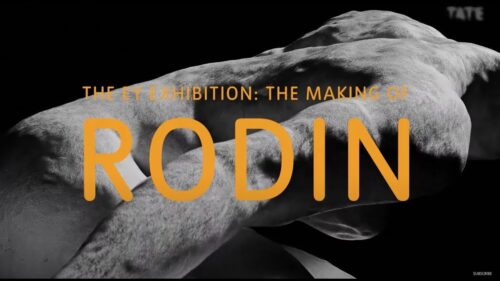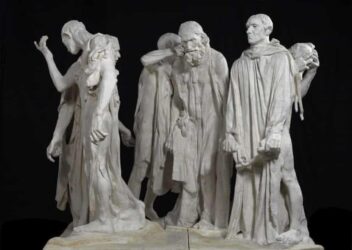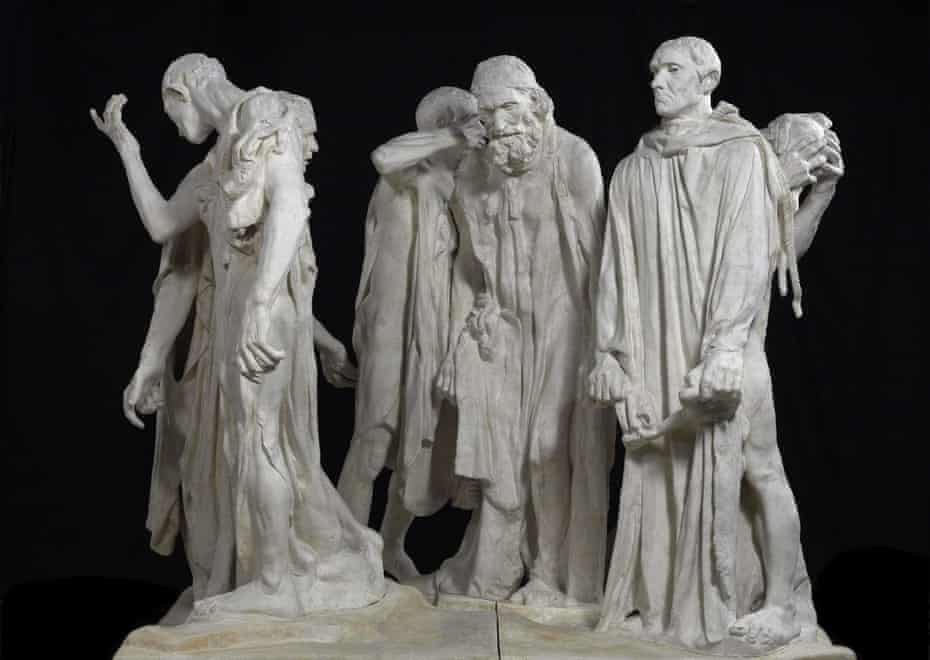
Permanence as Pleasure: Rodin at Tate Modern
Advanced in his career, Auguste Rodin (1840-1917) went to see the Hellenic (Greek and Roman) sculptures in the British Museum. Those which had been broken spoke most powerfully to him. So much so that he returned to his workshop and immediately broke some of his own sculptures. Their so-called message increased. Critics and friends agreed.
I don’t know if it’s because I’m a musician that when I see a work of art, I inexplicably hear it in my mind’s ear. Who was it who said that a musician is someone who hears with his eyes and sees with his ears? Rodin’s sculptures somewhat disturbingly, sing to me. That is where I feel their power.
There was cheese, cheese, wafting on the breeze,
In the stores, In the stores,
There was ham, ham, mixed up with the jam,
In the Quartermaster’s Stores.
Chorus:
My eyes are dim, I cannot see,
I have not brought my specs with me.
I have not brought my specs with me.
The Quartermaster’s Store song was intriguing and frightening in equal measure to my childhood mind. As I moved into my teens it started to feel fun. And no, I was never a Boy Scout. I understood later from Scout friends, that it was a favourite campfire singalong. Ruckus as well as parodistic. There as verses ad infinitum to The Quartermaster’s Store.
The other unforgettable stored musical experience which Rodin evoked was Grace Bumbry’s Carmen in the final scene where Don José stabs her to death where this exceptionally beautiful woman rolled down a steep flight of stairs at the back of the stage at the Teatro San Carlo in Naples. (I was then in my thirties.) The tenor was best forgotten. But the conductor was not: it was Nicola Rescigno.
Having been repeatedly rejected in his request to study at the École des Beaux-Arts in Paris, Rodin became an apprentice in a series of workshops, where he learned his trade. I began as artisan to become an artist. That is the good, the only method.
This hands-on approach evoked an experience I had with John Cage. It was a hot July day in my rooftop flat in the centre of Rome; John arrived for lunch with a bunch of edible weeds he had gathered from the hedgerows, which I dressed with lemon and extra-virgin olive oil. Delicious. Not at all to my surprise, John had the names of these weeds. We were on the terrace. John said he thought my lemon tree had a sex problem. Was this a joke? With John you never knew. Maggie Anderson (Franco Zeffirelli’s dialogue coach: they had just finished filming Romeo and Juliet) looked at me to see if we should laugh. We didn’t. And John was right.
This was the period when John was studying with the Zen Master, Dr Suzuki whom John invited to a hostess’s party where she and her husband sang a duet from an obscure operetta. It was grotesquely out of tune and rhythmically insecure. Horrified, John and his partner, Merce Cunningham, turned nervously round to see the face of Dr Suzuki, which was absolutely beatific. Wonderful said the Zen Master, absolutely wonderful. That may remind readers of a better-known Zen experience where the Master is with his novice when they arrive at a fast-flowing river and to show his skills, the novice begins walking across the top of the water without getting wet, whereon the Master calls him back and wades into the river, crossing and getting soaking wet. That is the way to cross a river says the Master.
There are lots of Zen experiences to be savoured in The Making of Rodin at Tate Modern.
Not in any other Tate exhibition have I seen works which are so subtly – and at the same time emphatically – handed over to the viewer to find the sense in what they see. It’s the Making that you have come to see. The Tate’s vast halls have the feel of workshops. Of course, every sculpture – whomsoever has made it – is always in dialogue with the space it occupies. But behold: you, the viewer in the cathedral-like silence, discover yourself as an active participant in these creations. There is something distinctly haunting about this. How can haunting be distinct? The answer is that it can’t. But it can be experienced. The invitation is there. The response has to be yours.
The bigger sculptures are overwhelmingly big. Studiedly so. Friends complained to Rodin that his huge sculpture of Honoré de Balzac didn’t look at all like the novelist. Of course it didn’t. Rodin was striving to convey the writer’s soul (a word I dislike, but sometimes no other will do). In other words he aimed for a portrait, rather than a photograph. Albeit that the portrait was originally in bronze.
Balzac steeped himself in the complexities of human beings – their dishonesty and hatred of all things except money. A young Mary Ann Evans – who called herself George Eliot when she began to write, late in life, was much influenced by Balzac’s dramas. When Virginia Woolf read Middlemarch she said, Finally, someone wrote a novel for grownups. It’s in this light we might look at Rodin’s statues of Balzac. (Plainly, Mrs Woolf had not read Charles Dickens’s Bleak House at the time, or she would not have given George Eliot an exclusive on grownup novels.)
Tate Modern use as a basis, an exhibition in Paris of 1900, also called The Making of Rodin. For all their technical professionalism, it’s a makeshift emphasis which is pleading to be seen like a first-time visitor, that comes through. Another paradoxical tease: Look away to look upon, to see these creations. Health warning: it’s addictive.
Rodin was neither the first nor last artist to have come to fame through a series of workshop apprenticeships, in defiance of academia. Patience is also a form of action he is quoted as saying in the exhibition’s booklet. He was unknown, in his mid-thirties, when he started work on The Age of Bronze which had such a startling lifelike appearance of the subject, a young Belgian soldier, Auguste Ney, he was accused of using the actual body of the boy as the clay foundation for the bronze statue. Indignant, the artist procured photos of Ney from all angles, to show how it was his own understanding of the soldier that was on display. That might be better called the artist’s imagination. He was off! And nothing would impede his inventiveness.
He became increasingly devoted to his workshop and insisted that his work be displayed in a makeshift workshop. Tate Modern solemnly respect this requirement.

King Edward III of England, in 1346-7 took the French port of Calais. With bizarre medieval horror he agreed to spare the townspeople if six of their leaders surrendered to him with ropes around their necks, came ready to be executed. They duly appeared and were exonerated by the king at the last minute. An opera plot? Rodin takes us into the drama of the history. The Burghers were first modelled unclothed, then fabric tunics were dipped in plaster and draped over the nudes, which allowed the martyrs to be seen through their pain and willingness to suffer. One hears the whispering of the soprano in the finalé of the Verdi Requiem. A bronze cast of The Burghers of Calais can be seen on a plinth in Victoria Tower Gardens, next to the Houses of Parliament.
There is a further Cage understanding activated in Rodin’s later work, invoking the chance operations revealed by China’s I Ching. This ancient divination was used passionately by Rodin. (With Cage, passion didn’t come into the equations.) The three women in the artist’s life were collaborators before they were lovers. One (Hélène Von Nostitz) was a major sponsor. There are no full statues of these women: it was their parts (especially their faces) which interested Rodin – their hands and limbs. (Musicians will recall the telling sculpted hands of Franz Liszt.) A fascinating side room shows how Rodin worked: first there would be sketches, changed, adjusted, corrected; then small-scale models (he called them his giblets) with limbs torn and/or added or removed. Flux. I Ching would always be consulted on the next change.
The Thinker is probably Rodin’s most adored work, huge and also subject to additions and adjustments. Everyone is invited to make their own understanding of this amazingly alive work. You have until 21 November to be able to do this.
Jack Buckley
The EY Exhibition: The Making of Rodin is at Tate Modern until 21 November. Booking essential.
